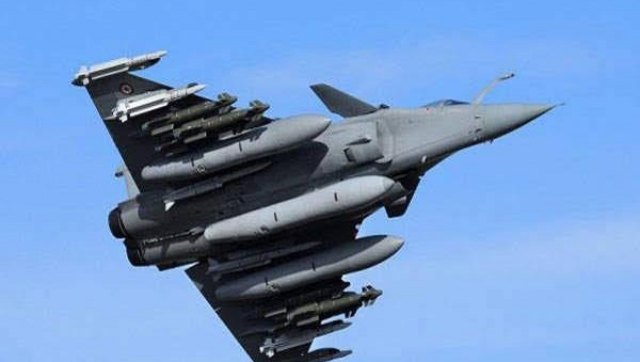The country is celebrating the 89th Foundation Day of the Indian Air Force (IAF) today, 8 October. Every year, IAF Day is commemorated to honour the contributions of the IAF towards strengthening the national security of the country. The celebrations will be held in the presence of senior officials of the armed forces as well as the Chief of Air Staff at the Hindon Air Force Station in Ghaziabad, Uttar Pradesh. In 1932, the IAF was established as a supporting wing of the UK’s Royal Air Force, with the first operational squadron or regiment coming into existence in April 1933. Since then, the organisation has distinguished itself as a protector of the country’s airspace. As the country observes the momentous occasion, here’s a look at the fleet of the fourth largest operational air force in the world: Rafale Known for its speed, agility, weapon holding capacity as well as attack capability, the Rafale aircraft, manufactured by Dassault, is capable of carrying a range of missiles and potent weapons. India had signed an inter-governmental contract with France for the procurement of 36 of these fighter jets in September 2016. The first squadron of the Rafale fighter jet will be deployed at Ambala air force station, located just 220 kilometres from the India-Pakistan border. Mirage-2000 One of the IAF’s deadliest and most versatile aircraft, it was first commissioned in 1985 and played a decisive role in the 1999 Kargil War. The IAF gave the aircraft the name ‘Vajra’, meaning lightning, soon after its induction into the force. HAL Tejas LCA The Tejas Light Combat Aircraft (LCA) by Hindustan Aeronautics Limited (HAL) forms an important part of the IAF, with the first Tejas squadron, called the Flying Daggers, being formed in 2016. It was the first indigenously built fighter aircraft that was inducted into the air force. The Sukhoi Su-30MKI The aircraft, also known as Flanker, was built by HAL under a license agreement with Russia’s Sukhoi. The craft is exclusively used by India, and the IAF is estimated to have 290 operational units of the 30MKI till date, according to News18. The jet can carry a range of equipment from missiles to radars and has a top speed of Mach 2 (2120 kmph), with a maximum takeoff weight of 38,800 kg. It is the IAF’s primary air to air and air to ground strike aircraft. SEPECAT Jaguar Developed jointly by the French Air Force and the British Royal Air Force, the SEPECAT Jaguar, also known as Shamsher, serves the IAF as primary ground attack aircraft. The entire Jaguar fleet of the IAF was recently upgraded by adding Avionics support. The upgraded Jaguar is only being used by the IAF in active duty. Mikoyan MiG-21 The MiG-21 is the first supersonic jet aircraft in history and is still in use in many countries, including India. The aircraft had played a pivotal role in the 1971 war and is being used only as Interceptors with a limited role as fighter jets. The IAF will replace the remaining units with the Tejas LCA. Mikoyan MiG-27 The MiG-27, known as ‘Bahadur’ (valiant) in India, is again a ground-attack aircraft designed by the Russian Mikoyan-Gurevich Design Bureau. The IAF retired the last MiG-27 squadron in 2017 and is one of the few forces to still operate the updated MiG-27 UPG ground attack aircraft. Mikoyan MiG-29 The MiG-29 and forms the second line of defence after the Sukhoi Su-30MKI and is known as Baaz (hawk) by the IAF. It was first introduced to counter US F-series planes such as the F-15 and F-16. The IAF is currently using the most advanced MiG-29 variant, the upgraded MiG-29 UPG. In the Kargil War, the aircraft was used to escort the Mirage-2000 to the attack targets. Keywords: IAF Day, IAF Day 2021, Indian Air Force, IAF fleet, Rafale, Mirage 2000, Sukhoi, MiG fighter aircraft, Tejas LCA, Dassault
The Tejas Light Combat Aircraft (LCA) by Hindustan Aeronautics Limited (HAL) forms an important part of the IAF, with the first Tejas squadron, called the Flying Daggers, being formed in 2016
Advertisement
End of Article


)

)
)
)
)
)
)
)
)



